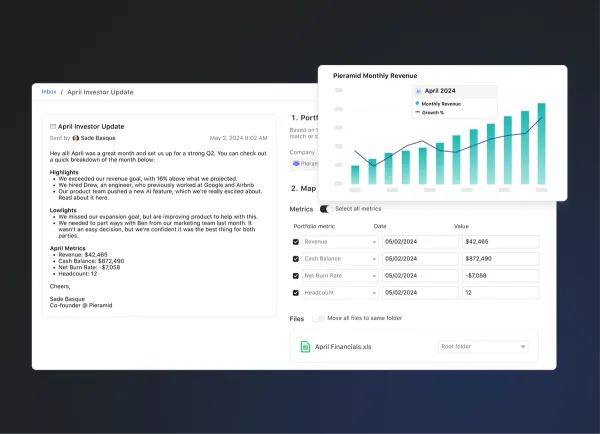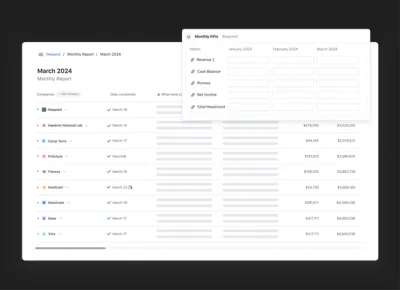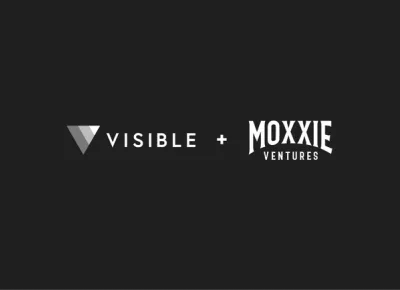
Private Equity refers to an alternative investment class. This alternative class of investment is made up of capital not listed on a public exchange, meaning private equity is made up of funds directly from private investors or investment groups. In some cases, it is even the conglomerate of buyouts of public companies converting their public equity back to private capital. There are 9 main types of private equity funds out there, all with their own core purposes, structures, and strategies in place. Let’s dive in and understand the 9 types of private equity funds.
Private Equity Funds: Illiquid, Predictive, and Powerful
An alternative investment class is essentially an investment that isn’t a stock, bond, or cash. Also known as an investment that isn’t easily sold or converted to cash. Private equity falls into this category because although private equity represents a cash value, it is not easily converted and is not a traditional stock or a traditional representation of cash. Private equity has no public exchange value and is known to be illiquid. Private Equity is illiquid, meaning it’s not easily converted into cash.
Private equity is different from traditional investments for a few reasons. Because they are not public investments or easily convertible to cash, private equity is not influenced by public markets. This means there is far less pressure on performance by investments from private equity funds as the swings of capital aren’t as dramatic, performance in the market isn’t a critical indicator of success.
The overall goal of private equity investments is to provide the investors with profit, usually within 4-7 years – typically a much quicker return time than traditional investing. Today, there is $2.5 Trillion involved in private equity funds across the globe. The definitions provided so far have been high-level – overall, just an understanding that private equity is an alternative form of funding that is not public and not influenced by market conditions. More specifically, there are nine core types of private equity funds: Venture Capital, Growth Equity, Buyouts, Infrastructure, Real Estate Private Equity, Mezzanine Capital, Fund of Funds, Distressed Private Equity, and Secondaries. Let’s dive into each.
1. Venture Capital (VC)
Venture Capital or VC is a type of private equity where investors specifically focus on investments that have long-term growth potential. VC funds typically operate with a managing partner and a handful of other operating partners or passive partners and are made up of pooled investments in high-growth opportunities in startups and other early-stage firms. VCs are typically only open to accredited investors.
The ideal and typical businesses that are a good match for Venture Capital investments are startups. VC funding can be provided to both startups or entrepreneurs directly and is seen at all stages of a startup, scaleup, or growth company's evolution. A couple of well-known companies that have successfully leveraged VC funding are AirBnB and Slack. Both took on VC funds as part of various investment rounds over the course of their company life cycles and now are both public companies. Slack was also acquired by Salesforce after going public. Airbnb has raised 6B in funding over 33 investment rounds while Slack took on $200M in VC investments.
There are a handful of reasons why you might want to consider a VC investment or not.
The Pros of Venture Capital:
- Access to Large Amounts to Money: Venture Capital Firms typically are made up of very wealthy, well-connected ex-startup folks who know the business and have the access and influence to raise a lot of money. A major pro of taking on a VC investment is the access to capital you will have.
- Leadership and Networking Experiences: In addition to access of great amounts of capital, VCs typically offer great networking and opportunities to work with great leaders and advisors. From the VC firm’s partner experience, any operating assistance they may provide, or the network of other industry experts the partners have access to, there are typically plenty of opportunities for learning and networking with your investing VC that will lend a hand to your business.
- No Recurring Risk or Schedules: VCs are expecting a long-term return, not a monthly return. There is not a monthly or recurring fee that’s needed to pay back your VC, the expected gains they see are repaid by the success of your business. This open-ended return plan is helpful for a founding team to not have to consider any cost to taking on VC funds.
- Future Opportunities: Taking on a Venture Capital fund as an investor opens up the door for future large round investments from that same VC or other influential VCs. Additionally, VCs often provide assistance with public relations, hiring, risk management and more.
The Cons of Venture Capital:
- Lower Ownership Stake: In return for the large sums of money without a recurring repayment schedule, VCs ask for long term opportunities to double or triple their returns. This means they are going to be wanting to take on a significant ownership stake in your startup when investing their money. This can be a con because it can easily turn into a dilution of your company and loss to the founding team as more and more VC money is taken on, becoming the price of scaling quickly – less ownership stake overall.
- Extensive Upfront Process: Often, the process of pitching to and securing VC capital is an arduous one. Founders may need to spend all of their time fundraising and prepping for investor presentations and conversations, losing the ability to engage with other areas of the businss. A distracted founder raising money, may lose sight of the real growth and details of their business. VC funding is rare relative to other types of funding and the time spent to secure it can be costly, especially since at the end of the process there is typically almost no negotiation leverage for the startup at all.
- High Pressure Stakes: At the end of the day, if your company is not growing to the aggressive expectations set out by the VC’s valuation, the company may come crashing down quickly. Funds are typically released on a performance schedule and low performers can lose their business (because they don’t have majority ownership anymore or don’t meet the board of investors expectations). If your company fails to grow, or doesn’t meet expectations, things can go south extremely quickly with VC funds accelerating to the end – if that pressure isn’t something your business or founding team is ready for, VC funding may not be the appropriate route.
Related Resources:
- Venture Capitalist vs. Angel Investor
- Checking Out Venture Capital Funding Alternatives
- 24 Top VC Investors Actively Funding SaaS Startups
- What Is a Limited Partnership and How Does It Work?
2. Growth Equity
Growth Equity is a form of Private Equity fund that is typically seen with late stage companies showing high growth potential. Growth Equity firms are looking to invest in companies with established Go-to-market business models and repeatable customer acquisition strategies already in place. Because of the already proven growth and success of late stage companies, growth equity is a lower risk investment to take on and to put forward, and a great choice if a business is looking to subsidize expansion of operations, make acquisitions, expand verticals of their TAM or enter new markets across the globe.
Typically, a growth equity deal is a minority investment for the equity firm and is purely to capitalize on quicker capital gains vs. any long term benefit or ownership opportunity. Spotify and Uber are two major companies that have taken on growth equity later in the business and used it to scale new features and expand into new markets. As Uber became global and needed more money to front new markets, growth equity from companies like TPG growth was critical to their success.
- The Pros of Growth Equity:
- Maintain Control: Typically, growth equity funds make non-majority stake investments. Meaning they infuse cash to already established companies, taking on little ownership relative to the early stage investors. This type of investment fund takes on less risk and has a shorter runway on return, so for a founder, growth equity can be super helpful to grow the company without having to give up any remaining shares of ownership.
- Quick Growth Opportunity: Cash is king, so in a scenario where your business is doing well, you just want to move faster to achieve growth goals, an infusion of growth equity can be just what is needed. Growth equity capital allows for big moves and can be the game changer needed to hit aggressive valuations and pipeline KPIs.
- The Cons of Growth Equity:
- Value Added: The main Con of growth equity is that there really is no value added besides cash to the business. Growth equity funds aren’t invested in the same way a VC would be – the path to success is much clearer for their investment companies and they aren’t majority owners so the value to the investor to provide leadership, networking, or advisory value is not as evident or needed. This can be a con to take on money for growth and not have the accompanying support or guidance.
3. Buyouts
A buyout, often synonymous with an acquisition, is when a controlling interest in a company is purchased. Buyouts consist of the majority stakeholder being acquired or bought, and then the now new majority owner buying out or purchasing back the remaining, minority stocks in the company. Buyouts can be completed by private equity firms or by other companies themselves. Typically, the ideal candidate for a buyout is a company that has some type of operational value or product value but is not hitting growth goals as quickly as expected or is not on a path to a profitable exit. A company may choose to buyout or acquire another company if they see the value of that company’s product, team, intellectual property, or customer base as a value-add to their existing company – making the combined power of both companies more valuable in the long run.
One company that benefited from a buyout was Engagio, the software company. They were bought out by Demandbase, a leader in account-based-marketing software. This benefited Demandbase by unlocking new use cases for their customers with sales intelligence and insights, and benefited Engagio by pairing their customer base and trajectory with an even faster growing SaaS company. The combined product made the Demandbase platform that much more attractive to buyers.
- The Pros of a Buyout:
- Accelerated Growth Opportunities: A buyout could take your existing investment or company to the next level by bringing in missing product, leadership, or market opportunities.
- Stronger Outcomes: For the company being bought out, it could bring about continued growth and value opportunities for the employees and stakeholders, depending on the terms of the buyout. In a best case scenario, a company where stocks were losing value, is given a new life with stock converting to the new company value and continuing to accelerate.
- The Cons of a Buyout:
- Growing Pains: Acquiring a company doesn’t happen overnight. There are pains and challenges associated with acquisitions or buyouts and not all companies can overcome them. Overcoming growing pains around integrating product, teams, and customer bases is critical to see any positive outcome to a buyout, and is not always possible.
- No Guarantees: A Buyout doesn’t come with any guarantees. It requires the acquiring company to do well which is not promised. A buyout is also potentially at a loss for certain investors depending on how desperate a buyout was, making it a very un-guaranteed way to exit a business.
There are two types of Buyouts, Managed and Leveraged.
Managed Buyouts
Managed Buyouts are most commonly seen with large corporations looking to sell off parts of their business, maybe sub-businesses, departments/divisions to another buyer in order to save the core business or make a profit off a poorly or average performing division. Another example of a managed buyout would be if a small, private business owner wishes to retire they may choose to sell their business to a conglomerate for a buyout. A managed buyout typically occurs with financing made up of debt and equity and is typically pretty substantial.
Leverage Buyouts
Leveraged Buyouts are buyouts that only require 10% capital and can take out debt to finance the rest of the buyout. This strategy of a buyout is extremely risky but if it pays off, it results in major returns with little cash down. A leveraged buyout is operating under the assumption that the buyout will be extremely profitable and a good business decision vs. needed to save the business.
4. Infrastructure
Infrastructure Private Equity is the practice of privately investing in the equity of physical infrastructure needed to support society. A few of the types of infrastructure that infracture PE is used to invest in include:
- Utilities such as gas, electricity, water
- Transportation such as airports, roads, bridges, railways
- Social infrastructure including schools and hospitals
- Energy sources like power plants and pipelines
- Renewable energy like solar power plants and wind farms
The Pros of Infrastructure Private Equity:
- There is always a need: Infrastructure investments are consistent and everlasting. There won’t be a change so suddenly in the market where all of a sudden a road or hospital isn’t needed.
- Consistent returns: Due to their consistent need, and typically low fluctuation in value, infrastructure investments produce steady, reliable, high cash returns.
The Cons of Infrastructure Private Equity:
- The Impact of Social Factors: Macro factors like recessions, inflation, population changes etc.. have a direct impact on infrastructure investments. Planning for these changes and flexes is different from investing in a more high risk high reward type of investment.
- Expensive to Fix: Even though there is a consistent, unwavering need for infrastructure investments, in the case that there ever is an issue (a bridge collapses, the sewage system gets contaminated etc..) fixes can often be costly and slow down returns for a long period of time.
5. Real Estate Private Equity (REPE)
A pretty straightforward type of private equity, real estate private equity invests in real estate projects and properties. A pretty risky investment, real estate private equity typically requires a significant amount of capital up front but 8-10% returns are often a common result. The types of businesses that are a good match for REPE are high-net-worth individuals with pensions, endowment funds, or LPs to invest because they come with a significant amount of capital up front.
The Pros of REPE:
- High Reward: With returns up to 10% being typical (and in rare cases, even higher ones), the reward of REPE is tremendous.
The Cons of REPE:
- High Risk: Despite the high returns, the amount of cash typically needed upfront is incredibly risky.
6. Mezzanine Capital
Mezzanine Capital is a mix of debt and private equity financing. If a company is seeking Mezzanine Capital, they are essentially taking a loan from the investor alongside giving away some equity for part of the received capital. The investor can then decide to concert the debt owed by the seeker of the investment to equity interest in the company. The conversion typically occurs in the case of a default. Typically, later stage companies are a good fit for Mezzanine Capital. They will seek this type of PE investment if they have a short term growth project that they need cash for such as an acquisition. The risk level is moderate for the investor as the worst case scenario ends with them owning more of the company vs. just not getting their investment back at all.
The Pros of Mezzanine Capital:
- Scheduled Payback Period: Because a portion of the investment is a loan, investors are set to make back their money on a timely payback schedule – providing a clear path to return assuming no default.
- Mostly Positive ROI: With the result of default equating to equity, the ROI is typically positive in either scenario for the investor with more equity resulting in more long term capital gains (potentially).
The Cons of Mezzanine Capital:
- Moderate Risk: This type of investment is not 100% a loan so there is still a portion of your investment at risk as this is not the most low risk investment option out there.
- Dips in Valuation: For the portion of your investment that is for equity and any unpaid loan portion that turns to equity, you’re then banking on the valuation of that company keeping your money out of the red – any dips in valuation or future failures could make your equity worthless.
7. Fund of Funds (FOF)
A FOF is exactly what it sounds like, is a private equity fund that invests in other funds, like hedge funds or mutual funds. FOF’s are also often called multi-manager investment funds. Individuals like you or I could invest in an FOF as it’s a great way for us to diversify our portfolios and start investing in a lot of assets with less capital needed. Emergence Capital is another example of an FOF, they invested in our investor, High Alpha.
The Pros of FOFs:
- Minimal Risk: Due to the broad diversification that an FOF sets out to achieve, the risk on FOF funds is typically minimal with lots of different types of investments to balance out during various market conditions and outcomes.
- Broad Opportunities: Investors with minal capital to invest may lean into investing in a FOF so that they can diversify their assets without needing more capital.
The Cons of FOFs:
- Higher expense ratios: Compared to other mutual funds and traditional funds out there, FOFs typically have a higher expense ratio – something to consider. Overlap fees and additional investor fees across the different investment funds are a potential concern.
8. Distressed Private Equity
This type of PE comes into play when a company is in trouble. A Distressed Private Equity investment is one where an investment firm will invest in failing or in-troubled companies debt or equity to have a controlling state, make changes,sell assets, do what needs to be done to turn that company around, turn a profit and even in some cases take that company public. Bain Capital is well known for its distressed strategy, raising funds specifically aimed at this purpose. They’ve bought companies but also investments like properties that were failing – Just this spring, Bain purchased a 160+ room hotel in Ibiza that was failing and aims to turn it around.
The Pros of Distressed PE:
- ROI Potential: The biggest pro of a Distressed strategy for investors is the idea that they could turn a major profit with very little if almost nothing down to take control (depending on how poorly off the investment is). The ROI can be huge with a distressed strategy but the right operators need to be in place.
The Cons of Distressed PE:
- ROI Potential: If the right strategy isn’t implemented or the problems run too deep, even a super low cost distressed investment can yield little to no ROI and even lead to a loss. Operator knowledge and a strategic plan is critical to the success of a distressed investment.
- Time to value: A distressed investment return could be only a few years, however, the time invested by an operating team could cut into the ROI as well as make the time feel much more intense to get the desired value vs. the more passive nature of a lot of PE investments.
9. Secondaries
Secondaries are the buying and selling of investments already owned. A Secondary PE fund or even individual traders are buying stocks or assets they see as valuable, holding them, and selling them when they know they can turn a profit. Many individual investors seek out Secondary PE experts to help manage their trades and advise on best practices.
A financial institution writing a mortgage for a customer is a great example of a secondary. That financial institution can then go and sell that mortgage security to a company like Fannie Mae on the secondary market to hedge their bets and turn a profit.
The Pros of Secondaries:
- Maximize your investments: Spending a minimal amount up front, or even spending a lot up front with the right knowledge guarantees you will maximize your investments if you buy and sell your secondaries with the right strategy.
The Cons of Secondaries:
- Selling at the wrong time: Buy low, sell high is the goal but timing is everything and a misstep on selling too soon or holding too long can have major consequences for a secondary PE firm.
How Crowdfunding Differs from Other Types of Private Equity
One type of funding that does not make the traditional list of Private Equity is crowdfunding. This type of funding for a business is different in a few ways. For the most part, the key difference is that the folks or “investors” putting money into a project dont’ typically have any stake in the success of the ubisness and the ROI on their investment is very different. Instead of gaining ownership or guaranteed money back from said “investment”, crowdfunding is typically more so done to prove interest from a market – fund my product if you think this would be useful, support my business, donate to a cause – and the return comes in the form of something like early access, a discount on said final product, or a tax write-off for a crowdfunded charitable initiative. Because there is no ownership or partnership or lender / borrower agreement established with crowdfunding, it’s not considered traditional PE. There are many popular websites that exist for crowdfunding such as GoFundMe.com
Tap Into Private Equity Funds and Keep Investors Updated with Visible
Get involved with the network of PE investors and funds in the Visible Community and update existing investors on your progress today by creating your free Visible account. Find investors that are right for your business with our free database, Visible Connect.




